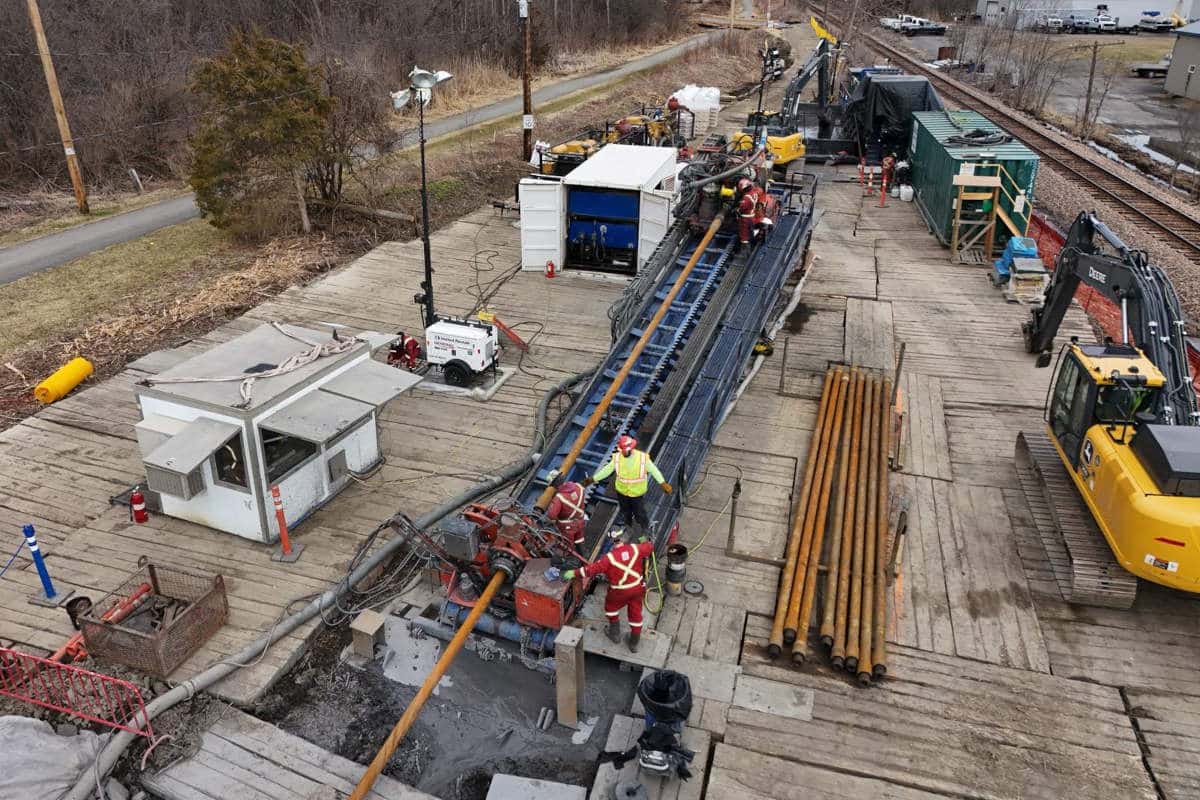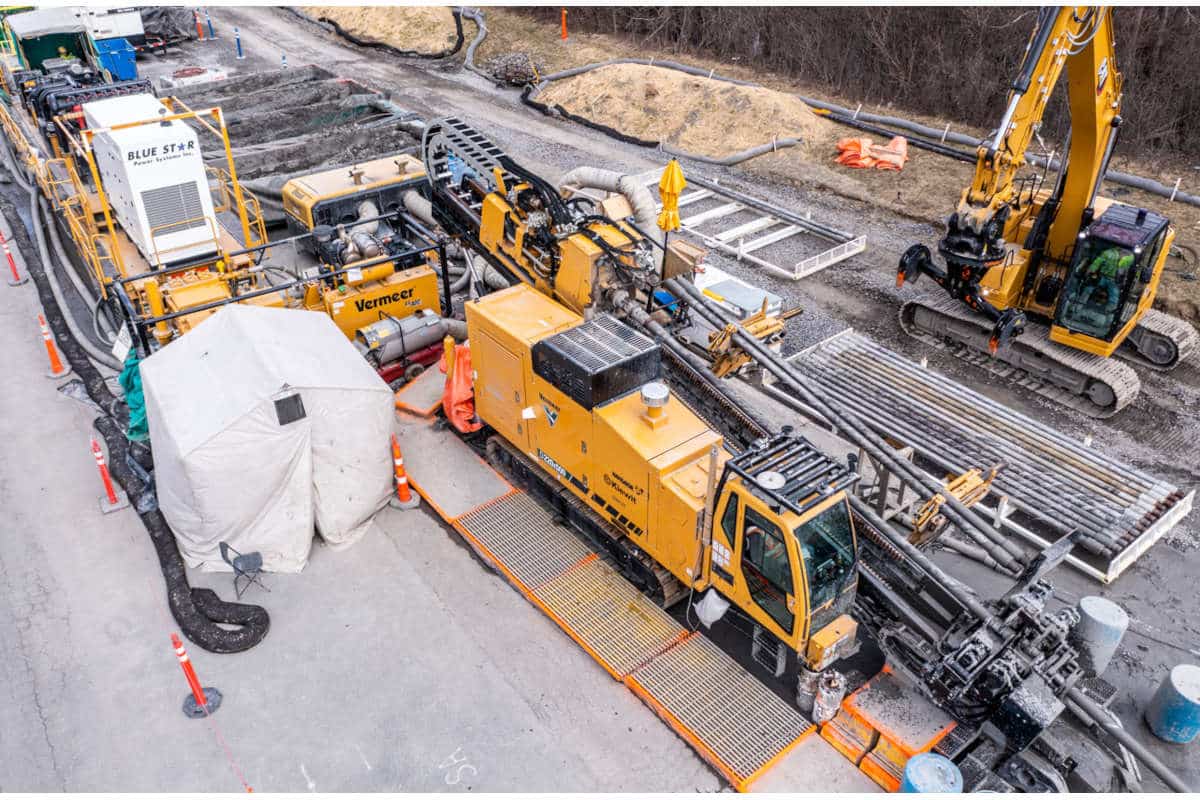Drill Master: Plunger Mud Pumps vs. Piston Mud Pumps
The mud pump used on most directional boring machines is either of the piston/liner or plunger/packing technology.
Mud pump manufacturers frequently offer both types of pumps. In reality, the pump power end and fluid ends are identical. The difference lies with the method used by the pump to displace the mud.
In the early 1990s, it was generally accepted that the pumps used on mid-size and small boring machines should deliver fluid to the bore at a high pressure (1,800 to 2,200 psi/124 to 152 bar)) and have a low flow rate of 5 to 25 gpm (19 to 95 Lpm).
As the industry matured and operators became more experienced, it was found that a higher mud flow with lower pressures was the superior way to bore. In some formations high pressure, low flow is still preferred and provides the most success. However, in the majority of areas, higher flows are best to provide hole cleaning (removal of solids) and provide adequate bentonite for formation sealing and lubrication.
Plunger/Packing
Plunger and packing technology is used when high (800 to 1,000 psi/55 to 69 bar and higher) pressures and lower flows are required. The flow pressure pushes on the front of the packing, compressing it tightly around the smooth surface of the reciprocating plunger sealing off leakage. When the pressure is below 800 to 1,000 psi (55 to 69 bar), there is insufficient flow pressure to assist in this sealing and packing leakage occurs. Leakage carries with it sand and other abrasive solids that lodge between the packing rings and plungers, causing rapid wear to the plunger surface and/or packing and making a good seal impossible.
One advantage of plungers/packing is that the packing can be adjusted by the operator to minimize leakage until the bore is complete and the pump can be serviced.
Piston/Liner
Pumps with piston/liner technology work in the opposite manner. Pistons work well to prevent leakage when flow pressures are low (below 1,200 psi/83 bar). Pistons are generally larger in diameter than plungers, allowing the pump to run slower-this is good-for the same flow rates.
Pistons have two disadvantages. First, when they fail or start leaking, the operator can do nothing to prolong operation until repairs can be made. Thus, repairs usually have to be made shortly after significant leakage starts. Second, pistons like to run cool and be lubricated. Thus, a piston cooling/lubrication system must be employed to add to piston life.
This system consists of a small centrifugal pump, spray nozzles, piping and collection tank. It sprays a mixture of water and lubricant (non-foaming soap or a small amount of liquid polymer), onto the back of the pistons.
Many boring machines are equipped with plunger pumps. These units are being applied where piston technology should be used, mainly low pressure and higher flows. These pumps frequently have leakage problems. To help operators combat leakage on these boring machines, conversion kits are being developed by some pump manufacturers to allow pumps to be changed from plunger to piston technology. Consult your boring machine or pump manufacturer for availability.
Economically, a good time to consider changing from plunger to piston technology on your pump is when the plungers are no longer serviceable and must be replaced. Conversion kits can be installed in the field and are considered bolt off bolt on upgrades.
If your mud pump has leakage problems, consider that you may be asking your pump to operate in a condition or application for which it was not originally designed.




